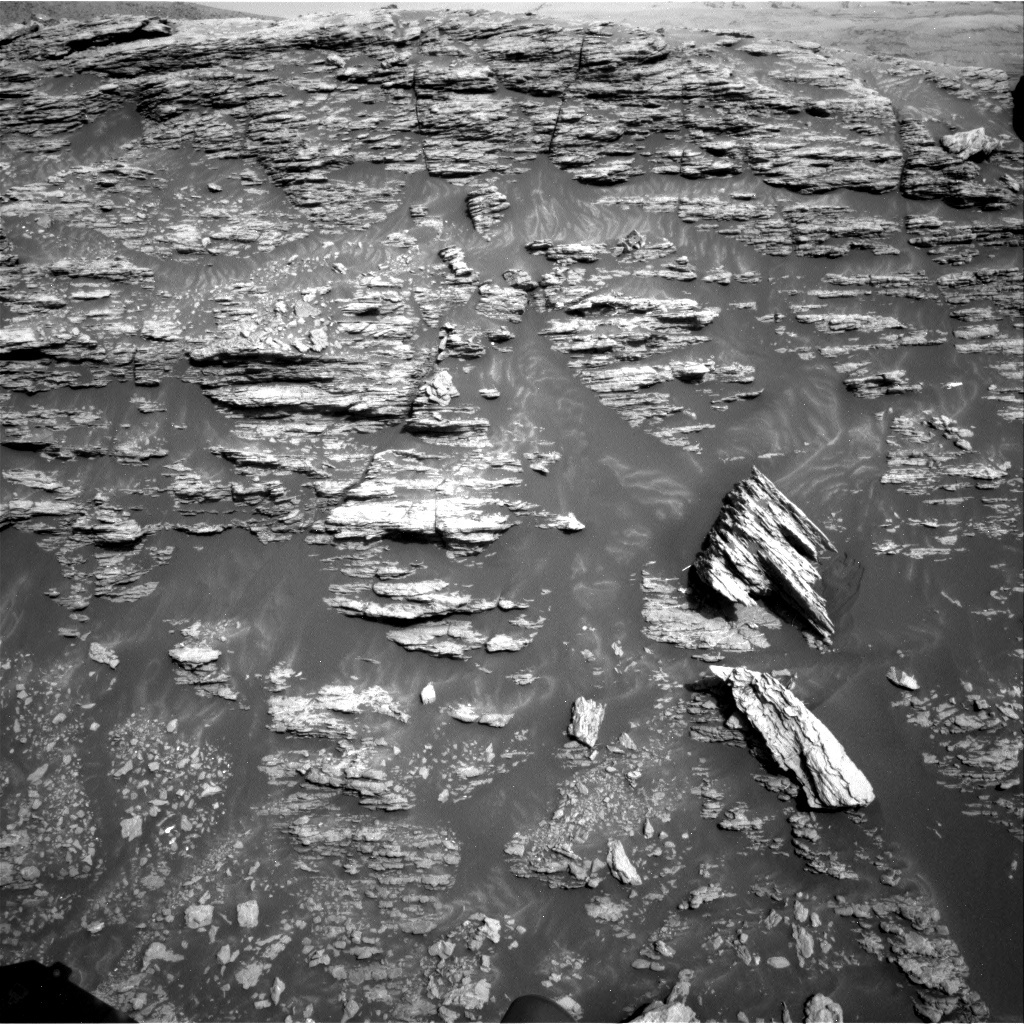3 min read

Yesterday’s drive brought us right up to a beautiful outcrop of layered rocks at “Stop 6” of our campaign to study the benches in this area, so we will spend the weekend doing everything we can to understand this outcrop. Benches like the ones we’re driving through in this area usually form when the bedrock consists of alternating layers of harder, more resistant rock and softer more “recessive” rock. At the current outcrop, we think we can see the transition from recessive to resistant rocks, so a priority was to collect chemistry measurements and high-quality images from both rock types.
Sol 2942 will begin with ChemCam observations of the targets “Devanha” on the recessive unit, “Taexali” on the resistant rocks, and “Clickimin” on the transition between the two. MAHLI will then take close-up images of two contact science targets: “St. Ninian” and “Geesa Water.” In the evening, APXS will make a short measurement on Geesa Water and an overnight measurement of St. Ninian.
The next sol will keep Mastcam very busy. After a short Navcam observation of the crater rim to measure dust in the atmosphere, Mastcam has a long series of observations, starting with a documentation image of the ChemCam target on Devanha and a multispectral image of the target Geesa Water and surroundings. This is followed by an 8x1 stereo mosaic of a scarp named “Munro” and a large 19x5 stereo mosaic of the whole outcrop in front of the rover. Next comes a smaller 3x2 stereo mosaic of some nearby bench-top layers at a location named “Walls Hill.” Mastcam then finishes up with an 11x3 stereo mosaic of another location with recessive layers known as “Area J.”
Once Mastcam finishes with all of that, the rover will make a short but somewhat tricky drive around the end of the outcrop and then back, to place the rover on top of the stack of rocks we’re currently looking at. We will do the usual post-drive imaging with Navcam, Mastcam, and MARDI to wrap up Sol 2943.
In Sol 2944, ChemCam will do some passive calibration observations followed by an autonomously-selected LIBS target off to the right of the rover. Navcam will then take a couple of movies looking for dust devils. Later in the afternoon, Mastcam will look at the sun to measure dust in the atmosphere and Navcam will watch for clouds. We’ll finish the sol by getting some data from CheMin
Finally, in the early morning of Sol 2945, Navcam and Mastcam will do a few more atmospheric observations to measure dust and look for clouds.
Written by Ryan Anderson, Planetary Geologist at USGS Astrogeology Science Center







